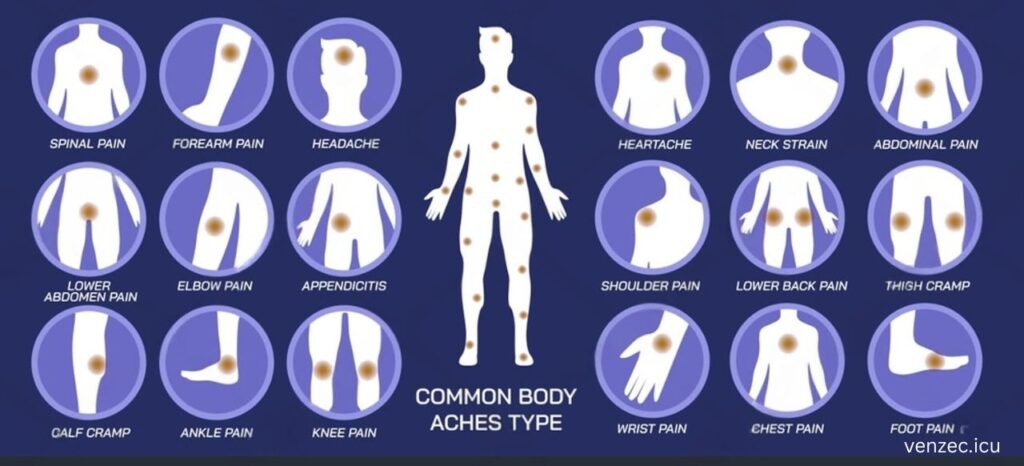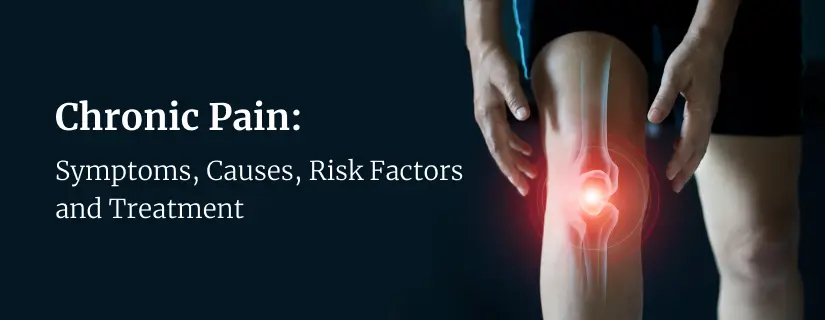Chronic pain is a condition that affects millions of people worldwide. Unlike acute pain, which typically results from an injury or illness and fades with healing, chronic pain persists for months or even years. The impact of chronic pain goes far beyond physical discomfort; it can affect your emotional, mental, and social well-being.
In this comprehensive guide, we’ll explore what chronic pain is, its causes, and the most effective ways to manage and treat it. Whether you’re dealing with chronic pain yourself or supporting a loved one, understanding the condition is key to living a better life despite the pain.
What Is Chronic Pain?
Chronic pain is defined as pain that lasts for 12 weeks or more, even after the injury or illness that caused it has healed. Unlike acute pain, which serves as a warning system for injury or damage to the body, chronic pain serves no clear purpose. It can become a condition in itself, with no obvious source of the pain.
This type of pain can be mild or severe, constant or intermittent. Common examples of chronic pain include conditions like:
- Arthritis
- Fibromyalgia
- Back pain
- Headaches or migraines
- Neuropathic pain
- Post-surgical pain
- Cancer-related pain
The pain may be localized to one part of the body or may affect multiple areas. Additionally, chronic pain can be accompanied by fatigue, sleep disturbances, and depression, further complicating its management.
Causes of Chronic Pain
Understanding the underlying causes of chronic pain is essential for effective management. While the exact cause may vary from person to person, several common factors contribute to chronic pain.
1. Injuries and Trauma
In some cases, chronic pain results from an injury or trauma that never fully heals. For example, a back injury from an accident or surgery may lead to long-term pain. Even though the injury heals, nerve damage or scar tissue can keep sending pain signals to the brain.
2. Chronic Conditions
Many chronic medical conditions are linked to ongoing pain. Some of the most common include:
- Arthritis: Inflammation in the joints can cause pain, stiffness, and swelling, especially in the knees, hips, and hands.
- Fibromyalgia: This condition causes widespread musculoskeletal pain, fatigue, and tenderness in localized areas.
- Diabetic Neuropathy: Nerve damage caused by diabetes can result in a burning or tingling sensation in the limbs.
- Multiple Sclerosis (MS): MS can lead to nerve pain, which may be constant or sporadic.
3. Nerve Damage (Neuropathic Pain)
Neuropathic pain occurs when there is damage to the nerves. Conditions like shingles, diabetes, and chemotherapy treatment can lead to nerve damage, which results in persistent pain signals being sent to the brain, even in the absence of any actual injury.
4. Psychological Factors
Chronic pain isn’t always caused by physical damage. Stress, anxiety, and depression can all amplify pain or cause pain sensitivity to increase. These psychological factors can make managing chronic pain even more challenging, creating a vicious cycle of pain and emotional distress.
5. Inflammation
Inflammatory diseases like rheumatoid arthritis, lupus, and inflammatory bowel disease can lead to persistent pain due to the ongoing inflammation in the body’s tissues.
Types of Chronic Pain

Chronic pain manifests in various forms, depending on the cause, location, and severity. Some common types include:
1. Somatic Pain
Somatic pain arises from injury or damage to the skin, muscles, bones, or connective tissues. This type of pain is often sharp and localized, though it can spread to other areas over time.
2. Visceral Pain
Visceral pain occurs in the internal organs, such as the stomach, intestines, or heart. It often presents as deep, aching, and dull pain, and may be difficult to pinpoint.
3. Neuropathic Pain
Neuropathic pain is caused by damage or dysfunction of the nervous system. It can feel like shooting, burning, or tingling pain. Conditions like diabetes, sciatica, and shingles can lead to neuropathic pain.
4. Referred Pain
Referred pain is felt in a part of the body different from the site of the injury. For example, pain in the shoulder may actually be caused by an issue in the neck or upper back.
How to Manage Chronic Pain Effectively
Managing chronic pain requires a multifaceted approach. There’s no one-size-fits-all solution, as pain management strategies will depend on the specific condition, pain levels, and the individual’s preferences.
1. Medications
Medications are often the first line of defense for chronic pain management. There are various types of pain medications available, including:
- Over-the-counter (OTC) pain relievers: Non-steroidal anti-inflammatory drugs (NSAIDs) like ibuprofen or acetaminophen can provide relief for mild pain.
- Prescription pain relievers: For more severe pain, opioids or other prescription pain medications may be prescribed. However, due to the risk of addiction and side effects, these are often used as a last resort.
- Antidepressants: Certain antidepressants, such as tricyclic antidepressants, can help alleviate chronic pain, especially neuropathic pain.
- Topical treatments: Creams, gels, or patches that are applied directly to the skin can provide localized relief.
2. Physical Therapy
Physical therapy plays a crucial role in managing chronic pain. A trained therapist can teach you exercises and techniques to improve strength, flexibility, and posture, which can help reduce pain and prevent further injury.
In cases of musculoskeletal pain, physical therapy is especially beneficial for improving mobility and function. Specific exercises tailored to your condition can target the areas causing pain.
3. Cognitive Behavioral Therapy (CBT)
CBT is a psychological treatment that helps individuals manage pain by changing their negative thoughts and behaviors related to pain. It can be particularly effective in managing chronic pain because it teaches coping strategies, relaxation techniques, and ways to manage stress.
4. Alternative Therapies
Some people find relief through complementary and alternative therapies. These can include:
- Acupuncture: Inserting thin needles into specific points on the body to stimulate energy flow and relieve pain.
- Chiropractic care: Adjustments to the spine or other joints to improve alignment and relieve pressure on nerves.
- Massage therapy: Soft tissue manipulation to reduce muscle tension and improve circulation.
5. Lifestyle Changes
Making certain lifestyle changes can also help manage chronic pain. These might include:
- Regular exercise: Staying active, even with a chronic pain condition, can help improve flexibility and reduce stiffness.
- Healthy diet: A balanced diet with anti-inflammatory foods can reduce pain and support overall well-being.
- Adequate sleep: Proper rest is crucial for the body’s healing process and can improve pain tolerance.
- Stress management: Practices like meditation, yoga, and deep-breathing exercises can help lower pain levels by reducing stress.
When to Seek Professional Help
While self-care strategies can help manage chronic pain, it’s important to consult with healthcare professionals when pain becomes unmanageable or if it’s interfering with daily life. A doctor or pain management specialist can recommend appropriate treatments, which might include prescription medications, injections, or surgery in some cases.
Conclusion
Living with chronic pain can be challenging, but it’s possible to regain control over your life with the right treatment and support. By understanding the causes of chronic pain, exploring various management strategies, and incorporating lifestyle changes, you can improve your quality of life.
Remember, there’s no one-size-fits-all solution, so it’s essential to work with healthcare providers to develop a personalized plan that suits your needs. With the right approach, chronic pain doesn’t have to dictate your life.For more information on chronic pain and its management, visit Venzec for expert advice and resources










Leave a Reply